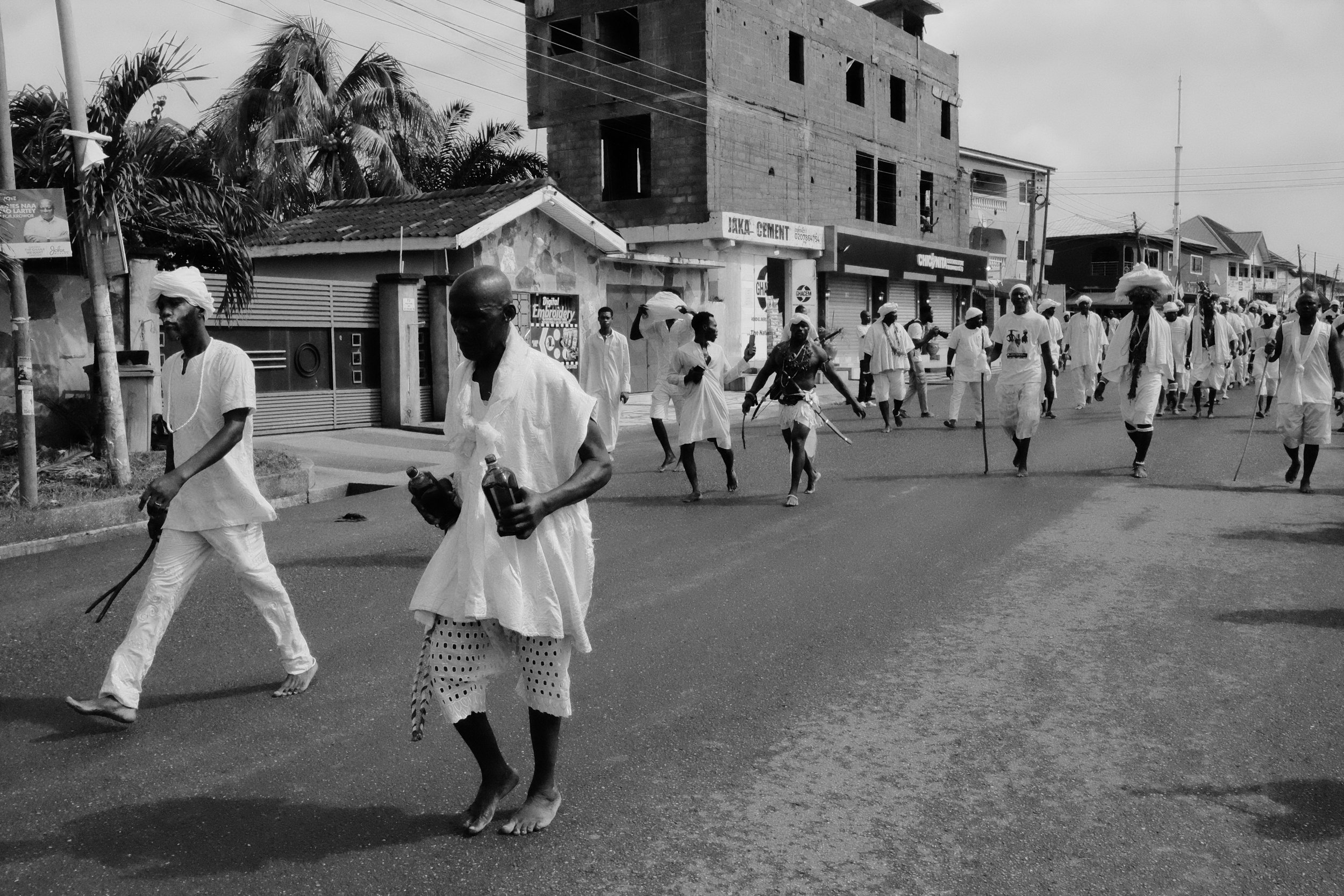26-05-2024
Nungua, Accra - Ghana
Abele Womɔ kɛ Shwamɔ
Abele Womɔ kɛ Shwamɔ: The Sacred Ceremony of the Homowo Festival
Before we delve into the heart of this story, it's important to establish a few ground rules for participating in this sacred ceremony:
Courtesy and Respect: Be courteous and respectful to everyone around you.
Dress Code: Wear white, off-white, beige, or very light-colored clothing.
Barefoot Procession: Remove your footwear if you wish to join the procession, either as an observer or to document it. Once you walk among us, you must do so barefoot.
"Abele Womɔ kɛ Shwamɔ"—the carrying and sprinkling of the sacred corn—is the seventh ceremony in the Homowo calendar, which began on April 7th.
The Ceremonial Calendar
The public rites commence with "Tekormor," which involves counting the calendar and checking the dates for Gadangme Homowo. This takes place between Gborbu wulomo and Dantu wulomo of Ga mashie, who later presents the dates to Nuumo Larkotey( Nae wulomo ) . Following this are:
"Dudor nu mli nu woo": Filling the sacred pot with water.
"Dzenten Nishwamor": Sprinkling unleavened corn at sacred sites and the corners of the earth.
Two more "Dudor nu mli nu woo" rituals follow, leading up to the sixth activity, "Mandzuramor," the purification of the town and atonement of the people’s sins. These ceremonies occur every Sunday after "Tekormor."
Preparation of the Sacred Corn
The carrier of the sacred corn is purified by the Gborbu Wulomo Shitse and must abstain from sex for a week before the occasion. The carrier, assisted by 12 disciples, travels to Antrayie-Oyibi from Nungua on Saturday evening. There, another rite is performed from evening till dawn before the journey back to Nungua with the sacred corn. A specific house at Antrayie-Oyibi prepares and purifies the corn prior to the journey.
Significance of the Abele Womor
The Abele Womor (holy corn) symbolizes the journey of our forefathers who, plagued by hunger, moved from Hebrew lands to Egypt in search of food, the origin of the Homowo festival.
The Journey
The people of Nungua carry the Adayibi (a generational corn brought down from Egypt) wrapped in white calico, journeying barefoot from Antrayie-Oyibi near Dodowa at 4 am. Fourteen main people bear the responsibility of this journey:
The person carrying the Adayibi (the sacred corn).
The person carrying the Shaami Tso (the sacred wood used for demarcation at the sacred Gborbu Temple).
A leaf is placed between their lips to enforce silence, and they are forbidden to look anywhere but forward. They are followed by 12 main disciples, representing the twelve tribes of Israel. The route traverses the legendary Pinkwai Forest, through Katamanso, Santeo, Borteymann, and crosses the motorway to Lashibi, Baatsonaa, Addogonno, Nkpor, and finally to the Nungua township.
Reception and Rituals
At Baatsonaa, the sacred entrance to the main towns, people from all walks of life, led by traditional office holders, priests, and priestesses, meet the pilgrims and join the journey to Nungua. The pilgrims proceed to Kpowuluno, the aboriginal abode of the founder of Nungua, Nuumo Borketey Larweh, where the Gborbu Wulomo Shitse receives the Adayibi and its pilgrims. He is assisted by the Nungua Mantse, Nungua Woleiatse, Nungua Dzaase Tse, and other traditional office holders. In the afternoon, the sacred corn is shelled and sprinkled at the ninety-nine divinities of Nungua, representing the seven corners of the earth, by the Gborbu Wulomo Shitse, the spiritual overlord of the Gadangme state.
This ceremony, rich in tradition and spiritual significance, is a cornerstone of the Homowo festival, encapsulating the journey, struggles, and triumphs of our ancestors.
a love for stories.
Real stories fascinate me and Documentary Filmmaking always gives us that opportunity to see diverse perspectives in the most interesting way. No two stories are ever the same.




























